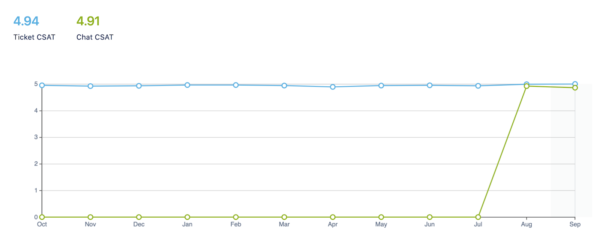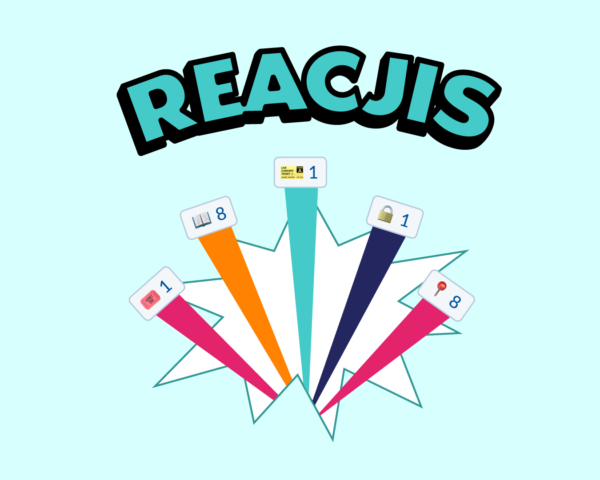In the last few years, internal chat platforms have become an integral part of doing business. Slack hosts more than 12 million active daily users. Microsoft Teams boasts 115 million-plus. And those numbers keep rising year-over-year.
Atlassians are among those millions of chat platform enthusiasts. We use Slack to facilitate real-time conversations within and across teams, to share news, and – as chat has become an integral part of teams’ day-to-day workflows – to provide any type of support to employees. Our Workplace Productivity team started a Slack support channel, and these days, it has the highest membership rate of any non-mandatory channel in the Atlassian Slack – more than 60 percent.
Of course, offering support in Slack presented some challenges. Despite fielding about 850 requests per month in the chat platform, the team didn’t have a simple way to track open requests, volume, or employee satisfaction, and workarounds could be time-consuming. The team had access to all these metrics for their Jira Service Management tickets, but Slack support wasn’t as easy to track.
So when Atlassian announced that we were acquiring conversational ticketing tool Halp – built to solve the very challenges the team was facing – Workplace Productivity jumped at the chance to implement it in its massive support channel.
The challenges of Slack support
The team was already committed to meeting our employees where they were (Slack), and we knew the need for chat support was only going to grow. But as we tried to implement a support system without Halp, we ran into some key challenges.
The primary challenge is what we refer to as “the black hole of chat.” In a fast-moving conversational platform, it was easy for requests to get overlooked for a variety of reasons.
We also struggled with volume tracking – we needed to know how many requests we were getting and our ticket resolution rate. Jira Service Management tracks these things well, but before Halp, the only way to monitor this in Slack would have been to manually count or input each chat request into Jira Service Management as a ticket. Both options required a lot of manual work for support agents and threatened to slow ticket resolution.
Our third key challenge was measuring employee satisfaction with conversational support. We needed to know how we were doing, but there was no simple way to track our success via Slack. Our temporary solution was to send email surveys after a support request was closed, but this yet again required manual work from support agents.
With these hurdles top of mind, we turned to Halp and set out to reach three key goals:
1. Make it quick and easy for teams to create and track tickets in the chat.
Having agents manually create tickets in Jira Service Management for every Slack request is time consuming and unsustainable. We needed a quick way for the team to create and triage a ticket – especially for requests that required more detailed investigation and might take longer to resolve.
2. Make sure we saw and addressed every request in Slack.
Nobody wants to miss a request and leave an employee hanging. We needed a way to make sure nothing got lost in the shuffle of our fast-moving chat feed and to flag what we were already working on, what was closed, and what was ongoing.
3. Measure customer satisfaction and ticket volume.
We needed to measure customer satisfaction and ticket volume for our chat support the same way we did with non-chat support requests through Jira Service Management. This data helps us allocate resources to the right places, understand how we’re doing, and keep support high quality across channels.
Rolling out Halp to meet our Slack support goals
With those goals in mind, the Workplace Productivity team implemented Halp in our biggest support channel and synced it with our existing Jira Service Management ticketing system.
Quick and easy ticket tracking
To solve our ticket tracking problem, we turned to reacjis – Slack emojis that synced with our ticketing system to open and close Slack tickets. We were already using the eyes emoji and check mark emoji to indicate when we were looking into an issue and when it was resolved, but Halp let us turn those reacjis into real, trackable tickets and statuses.
Now, the ticket reacji creates an official ticket in Jira Service Management (and we could create multiple ticket reacjis for multiple teams, so that as we scale support, tickets are automatically sent to the appropriate team’s service desk). The eyes reacji assigns the ticket to the person who added it, and the checkmark reacji closes a completed ticket.

Addressing every request
Reacjis also make it easier to keep track of requests. Now, instead of scrolling through Slack to make sure every request was closed, teams can view open requests in Jira Service Management or in a Slack triage channel.
Even when a request is days old and far up in the feed, it doesn’t disappear from view unless it’s officially closed. Just as important, if an employee adds another question or request to an already-closed thread, our Halp and Jira Service Management automation reopens the ticket in the triage channel, and in Jira Service Management. This is especially important if an agent is on leave, as reopened tickets automatically appear globally in the queue for the whole team.

Measuring volume and satisfaction
Now that everything syncs seamlessly between Slack and Jira Service Management, tracking key metrics is simple. We can track ticket volume without relying on manual counting or ticket entry. And when a ticket is closed, our systems automatically send out an email asking the employee to rate their support.
With Halp, when you close a ticket, the employee is asked to give their support a thumbs up or thumbs down directly in Slack. While this is a quick and easy way to get a sense of whether support is succeeding, we wanted a more nuanced, less binary approach.
Instead of pass-or-fail, we kept the five-star ranking system we were using in Jira Service Management to make sure we understood whether a thumbs up was truly “holy wow, Batman, five stars!” or “meh, average service.” The good news is that it was easy to turn off the default and keep our existing, automatically generated emails that ask employees to rank their support on a scale of one to five.

The results
Just two months after launching Halp, chat support requests were up by 17 percent, and Jira tickets dropped by 23 percent. This means that 71 percent of all support requests (800 – 1,000 per month) now come through Halp, verifying what we suspected: employees prefer conversational support.
Our service ratings are also doing well, with an average of 4.91 stars out of 5 given on approximately 120 surveys completed per month.
Beyond the numbers, we also hear rave reviews from individuals using Halp, on both the support side and the employee side of the interaction. As one support agent said:
Halp has made it a lot easier for us to track our chat support tickets on busy days and limit doubling up with another support member, as it shows you who is assigned to the ticket.
And as for the end user experience, one staffer summed it up well:
That app was super helpful. In my case, I couldn’t log into some things, but I could get to the Slack app on my phone. Made the whole process super easy to track and interact with the person who helped me, especially since it was after normal working hours in ATX and I was going back and forth to my computer in between making dinner, etc.
Survey the team and you’ll also hear about how much we love that we can:
- Combine multiple Slack messages into a single thread and ticket
- Add images in Slack and automatically sync them as attachments in Jira
- Scan our triage channel in Slack for what’s open vs. closed
- Send our agents instant notifications in Slack, even if a ticket was created in Jira
- Let end users see their open tickets in App Home without leaving Slack
We Added Halp to 50+ Teams in under 2 Days
Over 50 internal Atlassian support teams have reached out to set up Halp after the Workplace Productivity team shared details of their success with implementation and end-user adoption.
With so many teams reaching out, the Halp team threw all hands on deck for a special two-day Ship-It. Atlassian’s quarterly hackathon dedicated to innovation and special projects.
In 48 hours a team of 13 Halp employees brought Halp to 50+ internal teams, such as:
- Deal Desk – which handles requests from Sales, Success, and Channel managers in Slack and needed a better way to organize and track these questions into issues and tickets.
- Security, which manages security questions and vendor form requests from the entire organization and wanted support with tracking purposes and integration options.
- Privacy/Legal, which receives a wide range of requests from the company in many different Slack channels and needed a way to centralize and escalate hot incidences.
- Design team, which needed to automate ticket creation and improve the customer (fellow coworker) experience when they submit design requests.
- Customer Advocates, our customer-facing advocacy team, needed Halp to better understand request volume, report on metrics, and determine future headcount needs.
ROI was almost instant, with the Deal Desk team saying:
Implementing Halp in our high traffic slack channel allowed us to finally be able to track and take action on inquiries in a more organized method. We can also now report on volume, type of asks, etc. because we have everything syncing on JSM now. – Paul Vu, Senior Manager, Deal Desk
Interested in simplifying your conversational ticketing in Slack or Microsoft Teams? Click below for more.



